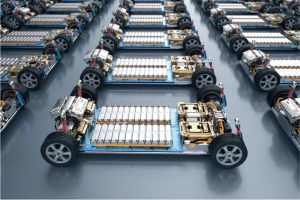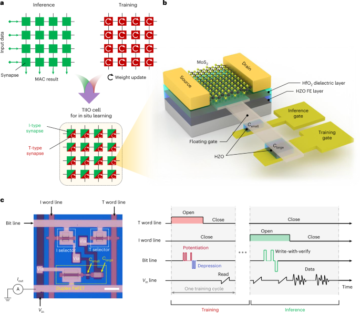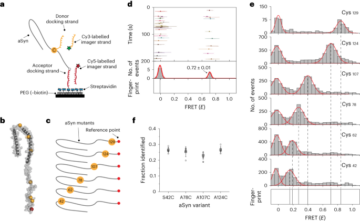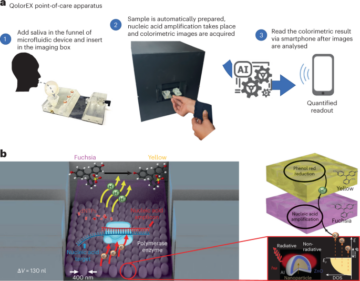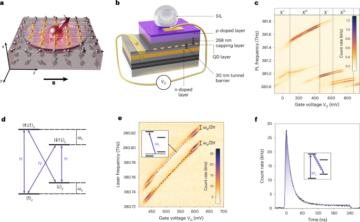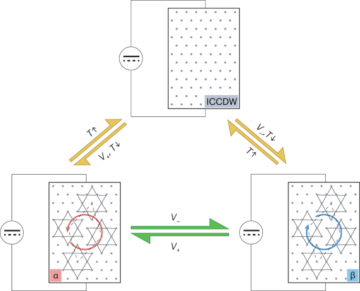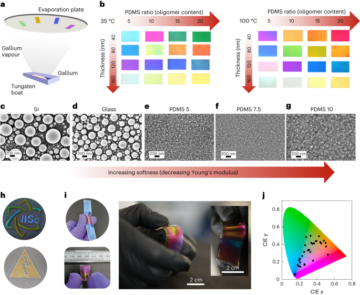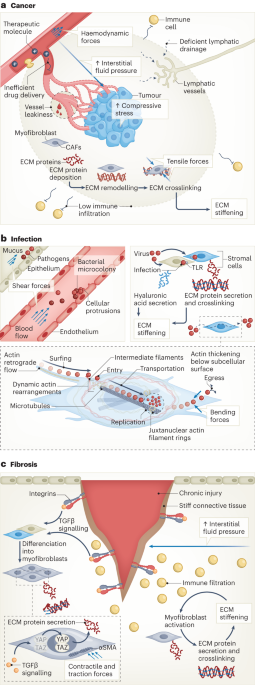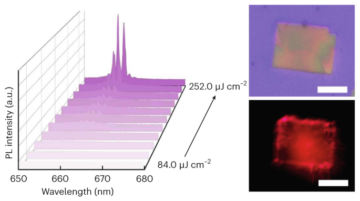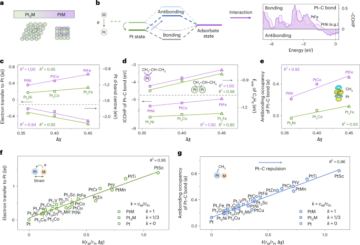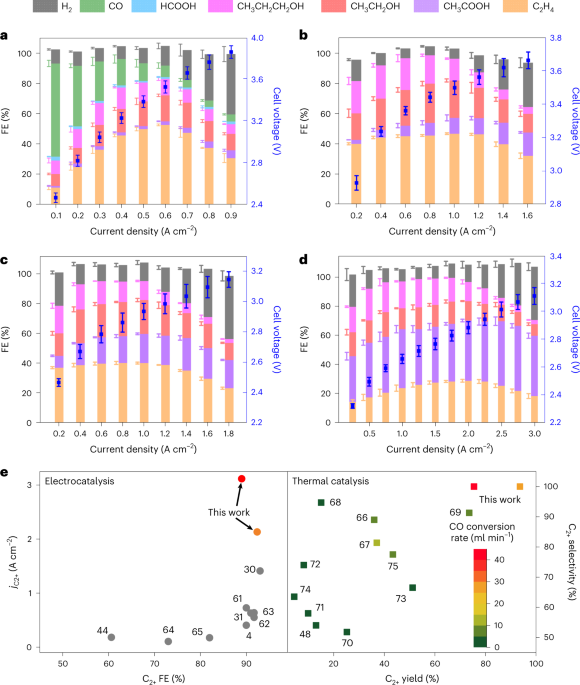
Bushuyev, O. S. et al. What should we make with CO2 and how can we make it? Joule 2, 825–832 (2018).
Masel, R. I. et al. An industrial perspective on catalysts for low-temperature CO2 electrolysis. Nat. Nanotechnol. 16, 118–128 (2021).
Arán-Ais, R. M. et al. The role of in situ generated morphological motifs and Cu(i) species in C2+ product selectivity during CO2 pulsed electroreduction. Nat. Energy 5, 317–325 (2020).
Ma, W. et al. Electrocatalytic reduction of CO2 to ethylene and ethanol through hydrogen-assisted C–C coupling over fluorine-modified copper. Nat. Catal. 3, 478–487 (2020).
Wang, J. et al. Linking the dynamic chemical state of catalysts with the product profile of electrocatalytic CO2 reduction. Angew. Chem. Int. Ed. 60, 17254–17267 (2021).
Zhang, B. et al. Highly electrocatalytic ethylene production from CO2 on nanodefective Cu nanosheets. J. Am. Chem. Soc. 142, 13606–13613 (2020).
Yin, Z. et al. An alkaline polymer electrolyte CO2 electrolyzer operated with pure water. Energy Environ. Sci. 12, 2455–2462 (2019).
Kim, C. et al. Tailored catalyst microenvironments for CO2 electroreduction to multicarbon products on copper using bilayer ionomer coatings. Nat. Energy 6, 1026–1034 (2021).
Yan, Z. et al. Improving the efficiency of CO2 electrolysis by using a bipolar membrane with a weak-acid cation exchange layer. Nat. Chem. 13, 33–40 (2021).
Monteiro, M. C. O. et al. Absence of CO2 electroreduction on copper, gold and silver electrodes without metal cations in solution. Nat. Catal. 4, 654–662 (2021).
Kim, D. et al. Selective CO2 electrocatalysis at the pseudocapacitive nanoparticle/ordered-ligand interlayer. Nat. Energy 5, 1032–1042 (2020).
Huang, J. et al. CO2 electrolysis to multicarbon products in strong acid. Science 372, 1074–1078 (2021).
Flores-Granobles, M. & Saeys, M. Minimizing CO2 emissions with renewable energy: a comparative study of emerging technologies in the steel industry. Energy Environ. Sci. 13, 1923–1932 (2020).
Birdja, Y. Y. et al. Advances and challenges in understanding the electrocatalytic conversion of carbon dioxide to fuels. Nat. Energy 4, 732–745 (2019).
Zheng, Y. et al. Understanding the roadmap for electrochemical reduction of CO2 to multi-carbon oxygenates and hydrocarbons on copper-based catalysts. J. Am. Chem. Soc. 141, 7646–7659 (2019).
Lum, Y. & Ager, J. W. Evidence for product-specific active sites on oxide-derived Cu catalysts for electrochemical CO2 reduction. Nat. Catal. 2, 86–93 (2019).
Romero Cuellar, N. S. et al. Two-step electrochemical reduction of CO2 towards multi-carbon products at high current densities. J. CO2 Util. 36, 263–275 (2020).
Moradzaman, M. & Mul, G. Optimizing CO coverage on rough copper electrodes: effect of the partial pressure of CO and electrolyte anions (pH) on selectivity toward ethylene. J. Phys. Chem. C 125, 6546–6554 (2021).
Wang, X. et al. Mechanistic reaction pathways of enhanced ethylene yields during electroreduction of CO2–CO co-feeds on Cu and Cu-tandem electrocatalysts. Nat. Nanotechnol. 14, 1063–1070 (2019).
Sang, J. et al. A reconstructed Cu2P2O7 catalyst for selective CO2 electroreduction to multicarbon products. Angew. Chem. Int. Ed. 61, e202114238 (2022).
Wei, P. et al. CO2 electrolysis at industrial current densities using anion exchange membrane based electrolyzers. Sci. China Chem. 63, 1711–1715 (2020).
Kim, B. et al. Effects of composition of the micro porous layer and the substrate on performance in the electrochemical reduction of CO2 to CO. J. Power Sources 312, 192–198 (2016).
Xing, Z. et al. Enhancing carbon dioxide gas-diffusion electrolysis by creating a hydrophobic catalyst microenvironment. Nat. Commun. 12, 136 (2021).
Hansen, K. U. & Jiao, F. Hydrophobicity of CO2 gas diffusion electrodes. Joule 5, 752–767 (2021).
Wang, L. et al. Electrochemical carbon monoxide reduction on polycrystalline copper: effects of potential, pressure, and pH on selectivity toward multicarbon and oxygenated products. ACS Catal. 8, 7445–7454 (2018).
Andrew, M. et al. Carbonate and bicarbonate ion transport in alkaline anion exchange membranes. J. Electrochem. Soc. 160, F994 (2013).
Pan, X. et al. Oxide-zeolite-based composite catalyst concept that enables syngas chemistry beyond Fischer–Tropsch synthesis. Chem. Rev. 121, 6588–6609 (2021).
Rezaei, F. et al. SOx/NOx removal from flue gas streams by solid adsorbents: a review of current challenges and future directions. Energy Fuels 29, 5467–5486 (2015).
Benn, E., Gaskey, B. & Erlebacher, D. Suppression of hydrogen evolution by oxygen reduction in nanoporous electrocatalysts. J. Am. Chem. Soc. 139, 3633–3638 (2017).
Li, J. et al. Constraining CO coverage on copper promotes high-efficiency ethylene electroproduction. Nat. Catal. 2, 1124–1131 (2019).
Jouny, M., Luc, W. & Jiao, F. High-rate electroreduction of carbon monoxide to multi-carbon products. Nat. Catal. 1, 748–755 (2018).
Gunathunge, C. M. et al. Spectroscopic observation of reversible surface reconstruction of copper electrodes under CO2 reduction. J. Phys. Chem. C 121, 12337–12344 (2017).
Jiang, S. et al. New aspects of operando Raman spectroscopy applied to electrochemical CO2 reduction on Cu foams. J. Chem. Phys. 150, 041718 (2019).
Vasileff, A. et al. Electrochemical reduction of CO2 to ethane through stabilization of an ethoxy intermediate. Angew. Chem. Int. Ed. 59, 19649–19653 (2020).
Ren, D. et al. Atomic layer deposition of ZnO on CuO enables selective and efficient electroreduction of carbon dioxide to liquid fuels. Angew. Chem. Int. Ed. 58, 15036–15040 (2019).
Gunathunge, C. M. et al. Existence of an electrochemically inert CO population on Cu electrodes in alkaline pH. ACS Catal. 8, 7507–7516 (2018).
An, H. et al. Sub-second time-resolved surface enhanced Raman spectroscopy reveals dynamic CO intermediates during electrochemical CO2 reduction on copper. Angew. Chem. Int. Ed. 60, 16576–16584 (2021).
Zhan, C. et al. Revealing the CO coverage-driven C–C coupling mechanism for electrochemical CO2 reduction on Cu2O nanocubes via operando Raman spectroscopy. ACS Catal. 11, 7694–7701 (2021).
Sandberg, R. B. et al. CO–CO coupling on Cu facets: coverage, strain and field effects. Surf. Sci. 654, 56–62 (2016).
Perez-Gallent, E. et al. Spectroscopic observation of a hydrogenated CO dimer intermediate during CO reduction on Cu(100) electrodes. Angew. Chem. Int. Ed. 56, 3621–3624 (2017).
Cheng, T., Xiao, H. & Goddard, W. A. Full atomistic reaction mechanism with kinetics for CO reduction on Cu(100) from ab initio molecular dynamics free-energy calculations at 298 K. Proc. Natl Acad. Sci. USA 114, 1795–1800 (2017).
Lum, Y. et al. Electrochemical CO reduction builds solvent water into oxygenate products. J. Am. Chem. Soc. 140, 9337–9340 (2018).
Luo, W. et al. Facet dependence of CO2 reduction paths on Cu electrodes. ACS Catal. 6, 219–229 (2015).
Luc, W. et al. Two-dimensional copper nanosheets for electrochemical reduction of carbon monoxide to acetate. Nat. Catal. 2, 423–430 (2019).
Gunathunge, C. M. et al. Revealing the predominant surface facets of rough Cu electrodes under electrochemical conditions. ACS Catal. 10, 6908–6923 (2020).
Zhong, D. et al. Coupling of Cu(100) and (110) facets promotes carbon dioxide conversion to hydrocarbons and alcohols. Angew. Chem. Int. Ed. 60, 4879–4885 (2021).
Peng, H. et al. Alkaline polymer electrolyte fuel cells stably working at 80 °C. J. Power Sources 390, 165–167 (2018).
Liu, X. et al. Tandem catalysis for hydrogenation of CO and CO2 to lower olefins with bifunctional catalysts composed of spinel oxide and SAPO-34. ACS Catal. 10, 8303–8314 (2020).
Ko, H. et al. Electrochemical reduction of gaseous nitrogen oxides on transition metals at ambient conditions. J. Am. Chem. Soc. 144, 1258–1266 (2022).
Kresse, G. & Furthmüller, J. Efficiency of ab-initio total energy calculations for metals and semiconductors using a plane-wave basis set. Comput. Mater. Sci. 6, 15–50 (1996).
Kresse, G. & Furthmüller, J. Efficient iterative schemes for ab initio total-energy calculations using a plane-wave basis set. Phys. Rev. B 54, 11169–11186 (1996).
Blöchl, P. E. Projector augmented-wave method. Phys. Rev. B 50, 17953–17979 (1994).
Kresse, G. & Joubert, D. From ultrasoft pseudopotentials to the projector augmented-wave method. Phys. Rev. B 59, 1758–1775 (1999).
Hammer, B. et al. Improved adsorption energetics within density-functional theory using revised Perdew-Burke-Ernzerhof functionals. Phys. Rev. B 59, 7413–7421 (1999).
Zhang, Y. & Yang, W. Comment on ‘generalized gradient approximation made simple’. Phys. Rev. Lett. 80, 890–890 (1998).
Grimme, S. Semiempirical GGA-type density functional constructed with a long-range dispersion correction. J. Comput. Chem. 27, 1787–1799 (2006).
Henkelman, G. & Jónsson, H. A climbing image nudged elastic band method for finding saddle points and minimum energy paths. J. Chem. Phys. 113, 9901–9904 (2000).
Henkelman, G. & Jónsson, H. Improved tangent estimate in the nudged elastic band method for finding minimum energy paths and saddle points. J. Chem. Phys. 113, 9978–9985 (2000).
Olsen, R. A. et al. Comparison of methods for finding saddle points without knowledge of the final states. J. Chem. Phys. 121, 9776–9792 (2004).
Munro, L. J. & Wales, D. J. Defect migration in crystalline silicon. Phys. Rev. B 59, 3969–3980 (1999).
Zhao, C. et al. In situ topotactic transformation of an interstitial alloy for CO electroreduction. Adv. Mater. 32, 2002382 (2020).
Martić, N. et al. Ag2Cu2O3—a catalyst template material for selective electroreduction of CO to C2+ products. Energy Environ. Sci. 13, 2993–3006 (2020).
Li, J. et al. Enhanced multi-carbon alcohol electroproduction from CO via modulated hydrogen adsorption. Nat. Commun. 11, 3685 (2020).
Ripatti, D. S., Veltman, T. R. & Kanan, M. W. Carbon monoxide gas diffusion electrolysis that produces concentrated C2 products with high single-pass conversion. Joule 3, 240–256 (2019).
Ozden, A. et al. Cascade CO2 electroreduction enables efficient carbonate-free production of ethylene. Joule 5, 706–719 (2021).
Zhao, Z. et al. Insight into the formation of Co@Co2C catalysts for direct synthesis of higher alcohols and olefins from syngas. ACS Catal. 8, 228–241 (2018).
Zhao, Z. et al. Increasing the activity and selectivity of Co-based FTS catalysts supported by carbon materials for direct synthesis of clean fuels by the addition of chromium. J. Catal. 370, 251–264 (2019).
Sun, X. et al. Manufacture of highly loaded silica-supported cobalt Fischer–Tropsch catalysts from a metal organic framework. Nat. Commun. 8, 1680 (2017).
Cheng, Q. et al. Confined small-sized cobalt catalysts stimulate carbon-chain growth reversely by modifying ASF law of Fischer–Tropsch synthesis. Nat. Commun. 9, 3250 (2018).
Su, J. et al. Syngas to light olefins conversion with high olefin/paraffin ratio using ZnCrOx/AlPO-18 bifunctional catalysts. Nat. Commun. 10, 1297 (2019).
Jiao, F. et al. Selective conversion of syngas to light olefins. Science 351, 1065–1068 (2016).
Cheng, K. et al. Direct and highly selective conversion of synthesis gas into lower olefins: design of a bifunctional catalyst combining methanol synthesis and carbon–carbon coupling. Angew. Chem. Int. Ed. 55, 4725–4728 (2016).
Zhai, P. et al. Highly tunable selectivity for syngas-derived alkenes over zinc and sodium-modulated Fe5C2 catalyst. Angew. Chem. Int. Ed. 55, 9902–9907 (2016).
Ni, Y. et al. Realizing and recognizing syngas-to-olefins reaction via a dual-bed catalyst. ACS Catal. 9, 1026–1032 (2018).
Xu, Y. et al. A hydrophobic FeMn@Si catalyst increases olefins from syngas by suppressing C1 by-products. Science 371, 610–613 (2021).
- SEO Powered Content & PR Distribution. Get Amplified Today.
- Platoblockchain. Web3 Metaverse Intelligence. Knowledge Amplified. Access Here.
- Source: https://www.nature.com/articles/s41565-022-01286-y
- 1
- 10
- 100
- 11
- 110
- 1994
- 1996
- 1998
- 1999
- 2016
- 2017
- 2018
- 2019
- 2020
- 2021
- 2022
- 28
- 39
- 67
- 7
- 70
- 9
- a
- active
- activity
- addition
- advances
- Alcohol
- Alloy
- Ambient
- Ambient Conditions
- and
- applied
- article
- aspects
- BAND
- based
- basis
- Beyond
- builds
- carbon
- carbon dioxide
- Carbon monoxide
- cascade
- Catalyst
- catalysts
- Cells
- challenges
- chemical
- chemistry
- China
- chromium
- combining
- comment
- comparison
- composed
- Concentrated
- concept
- conditions
- Conversion
- Copper
- coverage
- Creating
- Current
- dependence
- Design
- direct
- during
- dynamic
- dynamics
- ed
- effect
- effects
- efficiency
- efficient
- emerging
- Emissions
- enables
- energy
- enhanced
- enhancing
- estimate
- Ether (ETH)
- evidence
- evolution
- exchange
- facets
- field
- final
- finding
- formation
- Framework
- from
- Fuel
- fuel cells
- full
- functional
- future
- GAS
- generated
- Gold
- Growth
- High
- higher
- highly
- How
- HTTPS
- hydrogen
- image
- improved
- improving
- in
- Increases
- increasing
- industrial
- industry
- insight
- Intermediate
- IT
- knowledge
- Law
- layer
- light
- LINK
- linking
- Liquid
- made
- make
- material
- materials
- mechanism
- metal
- Metals
- Methanol
- method
- methods
- migration
- minimizing
- minimum
- molecular
- Nature
- New
- operated
- optimizing
- organic
- Oxygen
- performance
- perspective
- plato
- Plato Data Intelligence
- PlatoData
- points
- polymer
- population
- potential
- power
- pressure
- Product
- Production
- Products
- Profile
- promotes
- ratio
- reaction
- realizing
- removal
- Renewable
- renewable energy
- revealing
- Reveals
- review
- roadmap
- Role
- schemes
- SCI
- selective
- Semiconductors
- set
- should
- Silicon
- Silver
- Sites
- solid
- solution
- Spectroscopy
- State
- States
- steel
- streams
- strong
- Study
- Supported
- suppression
- Surface
- Switch
- tailored
- Tandem
- Technologies
- template
- The
- Through
- to
- Total
- toward
- towards
- Transformation
- transition
- transport
- under
- understanding
- via
- W
- Water
- What
- within
- without
- working
- X
- yields
- zephyrnet

